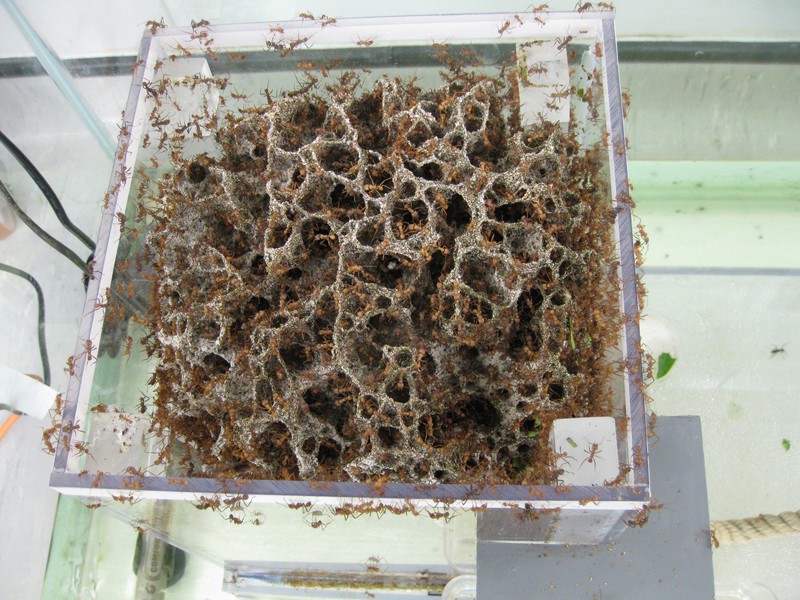

To help him in his search for new antibiotics, microbiologist Matt Hutchings is keeping five colonies of leafcutter ants in his lab in Norwich. Leafcutter ants aren’t native to East Anglia; these ones are from Panama.
“We bring them over ourselves,” Hutchings said. “The airlines don’t always like you to have ants in your hand luggage, but we have permits to bring them through, of course.”
The smaller colonies in the lab are kept in Tupperware containers, but the largest colony is in a series of display cases and contains anywhere between 5,000″”10,000 ants. (Counting exact numbers can be tricky.) These are the stars of the show, their antics broadcast online via a dedicated ant-cam.
“They’re very popular with my students in the lab,” said Hutchings, who teaches at the University of East Anglia. “They’re like pets.”
That’s if your pets had razor-sharp mandibles, which the ants use to strip the foliage from their rainforest habitats. “They’ll give you a nasty nip,” he conceded.
Hutchings believes the ants could unlock new, as-yet undiscovered antibiotics of vital importance, as overuse of the ones we already know about is endangering modern medicine’s ability to tackle bacterial diseases.
Hutchings is pretty matter-of-fact about how we got ourselves into this situation.
“We’ve been handing antibiotics out like Smarties,” he said. “The thing is, in the 1940s and 50s we were discovering hundreds of antibiotics. People were talking about eradicating infectious diseases. We thought we’d never run out.”
But in the last few decades no new antibiotics have been discovered, and diseases that we were previously able to combat using antibiotics are mutating and developing immunities, producing drug-resistant tuberculosis and “superbugs” like MRSA.
Although antibiotics can be reproduced in the lab, they are prolific in the natural environment. In fact, attempts to create synthetic antibiotics have largely been a failure and most of the antibiotics in use today–there are about 100 in clinical use–come from the soil.
Hutchings estimates there are thousands more out there, yet to be discovered, if only we look in some different places. That’s where the ants come in.
Leafcutter ants don’t eat the leaves they harvest. Instead, they have a symbiotic relationship with a certain type of fungus. They keep the fungus in their nests and use the leaves to feed it. In turn, the fungus produces food for the ants. Each depends on the other.

The ants “farm” the fungus, tending it and protecting it from disease. They patrol their colony, and when they encounter a foreign microbe they remove it to a “compost heap” where they use antibiotics, produced by friendly bacteria that grow on their bodies, to sterilize the waste.
“The ants have effectively selected new strains of bacteria that we haven’t seen before, and they are making new antibiotics that we haven’t seen before,” said Hutchings.
He and his team believe the ants may even be able to control the friendly bacteria, chemically prompting it to produce the appropriate antibiotics.
So far the team has collected more than 500 strains of bacteria from the ants, some of which appear to be able to treat diseases that affect humans. The most promising strains are sent for genome sequencing to unlock their DNA, but it will be years before the new antibiotics the team is discovering make it through to clinical trials, and longer still before the successful ones are approved for medical use.
In the meantime, we will need to improve our management of antibiotics if we are to avoid creating diseases resistant to this potential crop of new drugs.
For more information on Matt Hutchings and his team’s work, visit www.uea.ac.uk/leafcutter-ants .


How We Get To Next was a magazine that explored the future of science, technology, and culture from 2014 to 2019. This article is part of our Vital Signs section, on the future of human health. Click the logo to read more.
